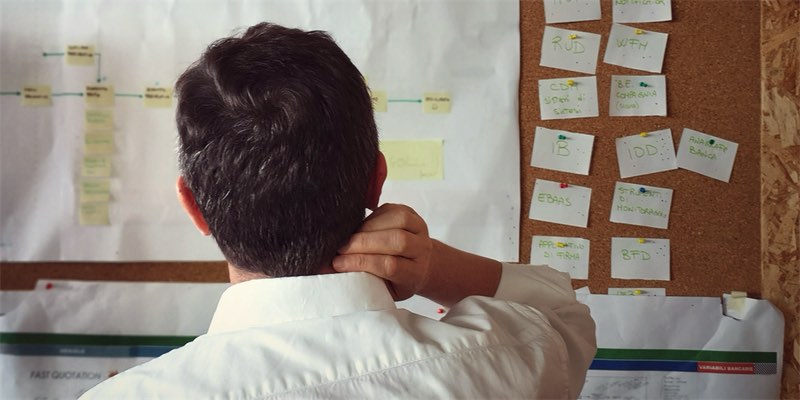In any workplace, mistakes and missteps are bound to happen. No matter how diligent or careful we are, there will always be moments where things don't go according to plan. In such situations, apologies can be a powerful tool to repair relationships, rebuild trust, and move forward.
Apologising at work, however, can be a complex and nuanced process. The dynamics of the workplace are often shaped by hierarchies and power structures, and the way we apologise to our seniors, equals, and juniors can differ significantly.
Moreover, effective apologies require more than just saying sorry. It involves acknowledging the mistake, taking responsibility, expressing remorse, and outlining a plan for improvement. It also involves a willingness to listen to the other person's perspective and take action to prevent future mistakes.
In this article, we will explore the art of apologising in the workplace. We will discuss best practices for apologising to seniors, equals, and juniors, and provide guidance on how to build a culture of accountability and growth.

Download: Speak App for iOS | Speak App for Android
Apologising to Seniors
Apologising to seniors at work can be particularly challenging as it involves acknowledging a mistake made in front of someone with more experience, authority, or expertise. However, when done effectively, apologising to seniors can be an opportunity to show respect, accountability, and a commitment to growth.
The following are some key steps to consider when apologising to seniors at work:
- Acknowledging the mistake: Start by acknowledging the mistake made and taking responsibility for it. Avoid making excuses or blaming others. Instead, take ownership of the mistake and express a genuine desire to make things right.
- Expressing remorse and empathy: Show genuine remorse and empathy for the impact of the mistake on the senior. Acknowledge how the mistake may have caused inconvenience, disappointment, or frustration, and express a sincere apology.
- Outlining a plan for improvement: Once you have acknowledged the mistake and expressed remorse, outline a plan for improvement. Discuss what steps you will take to prevent the mistake from happening again and how you will make amends for any negative consequences.
- Providing reassurance and follow-up: End the apology by providing reassurance that you understand the gravity of the situation and that you are committed to making things right. Offer to follow up on the situation and provide updates on the progress made in resolving the issue.
It is important to keep in mind that the way you apologise to a senior can vary depending on the situation, the nature of the mistake, and the personality of the senior. However, the key is to approach the situation with humility, sincerity, and a willingness to learn and grow. Effective apologies to seniors can be a powerful way to build trust, respect, and positive working relationships.
Apologising to Colleagues
Apologising to equals in the workplace can be just as important as apologising to seniors. In a workplace where colleagues work together closely, misunderstandings and mistakes can arise, and it is essential to address them in a timely and effective manner to maintain positive working relationships.
Here are some key steps to consider when apologising to equals at work:
- Taking responsibility for the mistake: Take responsibility for the mistake, and avoid making excuses or blaming others. Accepting responsibility for the mistake shows that you are willing to be accountable for your actions and that you value the working relationship.
- Offering a sincere apology: Offer a sincere and meaningful apology. Be specific about what you are apologising for and express remorse for any negative impact the mistake may have had on the other person.
- Discussing ways to prevent future mistakes: Discuss ways to prevent similar mistakes from happening again. Ask for feedback and suggestions from the other person, and be open to their input. This can help to strengthen the working relationship and prevent similar misunderstandings from occurring in the future.
- Moving forward and rebuilding trust: After apologising, focus on moving forward and rebuilding trust. Be proactive in taking steps to demonstrate your commitment to the working relationship, such as following up with the other person, completing tasks on time, and communicating effectively.
It is also essential to keep in mind that effective apologies require active listening and a willingness to understand the other person's perspective. Take the time to listen to their concerns and show empathy for how the mistake may have impacted them. This can go a long way in strengthening the working relationship and rebuilding trust.
Apologising to Juniors
Apologising to juniors in the workplace can be a unique challenge. As a senior, you have a responsibility to lead by example and set the tone for the workplace culture. When you make a mistake, it can impact the morale and productivity of the entire team.
Here are some key steps to consider when apologising to juniors in the workplace:
- Acknowledge the mistake: Start by acknowledging the mistake and taking responsibility for it. Be transparent about what happened and avoid making excuses or blaming others.
- Express remorse and empathy: Show genuine remorse and empathy for the impact of the mistake on the junior. Acknowledge how the mistake may have caused frustration, confusion, or inconvenience, and express a sincere apology.
- Discuss ways to prevent similar mistakes from happening again: Discuss ways to prevent similar mistakes from happening again in the future. This can include providing additional training or resources, improving communication, or clarifying expectations.
- Offer support and reassurance: Offer support and reassurance to the junior. This can include providing additional resources or support, ensuring that the mistake will not impact their performance evaluation or career progression, and following up to ensure that the junior has the tools and resources they need to succeed.
It is important to remember that apologising to juniors can have a significant impact on their perception of you as a leader. By showing humility, accountability, and a commitment to growth, you can set an example for the rest of the team and build a culture of accountability and continuous improvement.
Apology Best Practices
Regardless of who you are apologising to in the workplace, there are certain best practices that can help ensure that your apology is effective and well-received. Here are some key best practices to keep in mind:
Act quickly: Apologise as soon as possible after the mistake has been made. This shows that you take responsibility for your actions and value the working relationship.
Be specific: Be specific about what you are apologising for and avoid making general statements. This helps to ensure that the other person understands exactly what you are apologising for.
Take responsibility: Take responsibility for the mistake, and avoid making excuses or blaming others. This shows that you are willing to be accountable for your actions and that you value the working relationship.
Express empathy and remorse: Show genuine empathy and remorse for the impact of the mistake on the other person. Acknowledge how the mistake may have caused inconvenience, disappointment, or frustration, and express a sincere apology.
Focus on solutions: Discuss ways to prevent similar mistakes from happening again in the future. This can include providing additional training or resources, improving communication, or clarifying expectations.
Follow up: After apologising, follow up to ensure that the issue has been resolved and that the other person is satisfied with the outcome. This helps to reinforce the importance of the working relationship and builds trust.
Learn from the mistake: Take the opportunity to learn from the mistake and use it as an opportunity for growth. This helps to demonstrate your commitment to personal and professional development.
Examples of Apology
Here are some examples of apologising in different workplace scenarios:
Apologising to a senior:
Dear [Senior’s name], I wanted to apologise for missing the deadline on the report. I understand that it has caused an inconvenience for you and the team. I take full responsibility for my mistake, and I am committed to finding ways to prevent this from happening again in the future. Please let me know how I can make it right.
Apologising to an equal:
Hi [Equal’s name], I wanted to apologise for my behaviour in the meeting yesterday. I realise that I interrupted you and didn't give you the chance to fully express your ideas. I was wrong to do that, and I am committed to ensuring that it doesn't happen again. I value your contributions and I want to work together to make sure we are both heard and our ideas are considered.
Apologising to a junior:
Hi [Junior’s name], I wanted to apologise for the confusion that my instructions caused. I understand that it may have been frustrating for you, and I am sorry for that. I will make sure to provide more clarity in the future and to check in with you to ensure that you have everything you need to complete your tasks. Please don't hesitate to reach out if you need any support or clarification.
Overall, effective apologies require taking responsibility, expressing empathy and remorse, focusing on solutions, and learning from mistakes. By following these best practices, you can build strong working relationships, foster a culture of accountability and continuous improvement, and create a more positive and productive workplace.




















